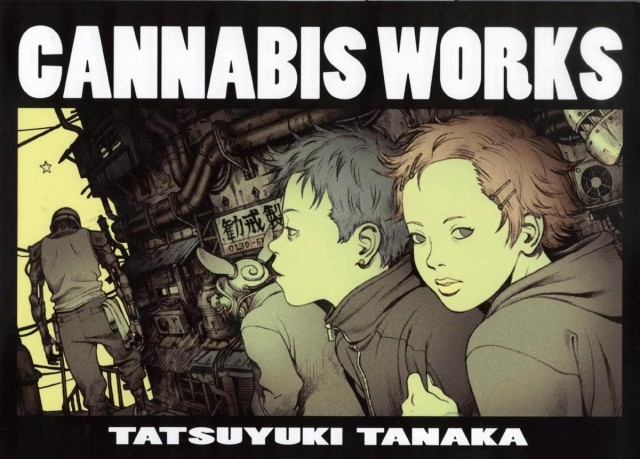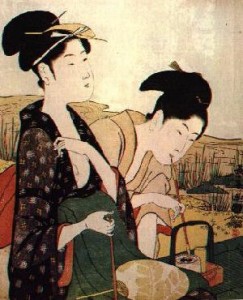 When it comes to cannabis, Japan is one of the most draconian countries.
When it comes to cannabis, Japan is one of the most draconian countries.
A recent article titled, The Secret History of Cannabis in Japan explains, “Punishment for possession is a maximum 5 years behind bars and illicit growers face 7-year sentences. Annually, around 2000 people fall foul of these laws – their names splashed on the nightly news and their careers ruined forever. The same prohibition that dishes out these punishments also bans research into medical marijuana, forcing Japanese scientists overseas to conduct their studies.”
Considering that the US, for the most part, was not that much kinder to cannabis users up until the last few years, that news is not so confounding. What complicates the issue is that up until the mid 1940’s, cannabis enjoyed unprecedented acceptance (praise, even) in Japan. There are even records of Ninja training by jumping over cannabis!
Historically, cannabis fibers have been found dating back to the Jomon period (10,000-300 B.C.E.). It is known that cannabis was used for clothing, ropes, bow-strings, construction materials as well as for spiritual reasons, since it was believed that cannabis had the power to grant good luck, safe travel, and impart spiritual blessings. In fact, as Japan was gearing up to go to war, the military supported cannabis farming for its use in war-time materials.
 Though cannabis farms (once numbering over 25,000) have all but vanished, the legacy of Japanese cannabis is impossible to hide. Each year, millions of wild cannabis plants grow all over the country, ancestors of the cannabis that was intentionally grown for centuries.
Though cannabis farms (once numbering over 25,000) have all but vanished, the legacy of Japanese cannabis is impossible to hide. Each year, millions of wild cannabis plants grow all over the country, ancestors of the cannabis that was intentionally grown for centuries.
It is not clear whether or not cannabis was smoked in Japan during its heyday. For much of its history, Japan was governed by a class system where the upper-class monopolized the rice (and sake) production. Cannabis could very well have been the substance of choice for the majority of the working class citizenry.
So what happened? Why did this once loved plant get sent on the proverbial walk of shame? Enter the United States.
“However after Japan’s surrender in 1945, U.S. authorities occupied the country and they introduced American attitudes towards cannabis. Having effectively prohibited its cultivation in the States in 1937, Washington now sought to ban it in Japan. With the nation still under U.S. control, it passed the 1948 Cannabis Control Act. The law criminalized possession and unlicensed cultivation – and more than 60 years later, it remains at the core of Japan’s current anti-cannabis policy. At the time, the U.S. authorities appear to have passed off the Act as an altruistic desire to protect Japanese people from the evils of drugs. But critics point out that occupation authorities allowed the sale of over-the-counter amphetamines to continue until 1951. Instead, several Japanese experts contend that the ban was instigated by U.S. petrochemical lobbyists who wanted to overturn the Japanese cannabis fiber industry and open the market to American-made artificial materials, including nylon.”
Simultaneously, a sustained propaganda campaign has cleaved the Japanese public from their cannabis cultural roots – brainwashing them into perceiving marijuana as a poison on a par with heroin or crack cocaine.
These campaigns might have stamped out all traces of Japan’s millennia-long history were it not for one factor – the resilience of the cannabis plants themselves. Every summer millions of these bushes – the feral offspring of cannabis legally cultivated before 1948 – pop up in the hills and plains of rural Japan. In 2006, 300 plants even sprouted in the grounds of Abashiri Prison in Hokkaido – much to the embarrassment of the powers-that-be. Every year, the Japanese police wage well-publicized eradication campaigns against these plants. On average, they discover and destroy between one and two million of them. But like so many other aspects of the drug war, theirs is a losing battle and the next year, the plants grow back in larger numbers than ever.”
This is truly a fascinating article and it is full of cool little bits of history. It’s startling how well U.S. prohibition worked as a model, first in America, then seamlessly transported to Japan. At least in America, there really wasn’t too much history to compete with, but in Japan, that level of brainwashing is simply staggering. This plant had been a huge part of their culture for millennia and politics and propaganda eradicated all of that in a matter of years.
Thankfully, that ridiculous period in both of our histories seems to be coming to a much-needed end.









